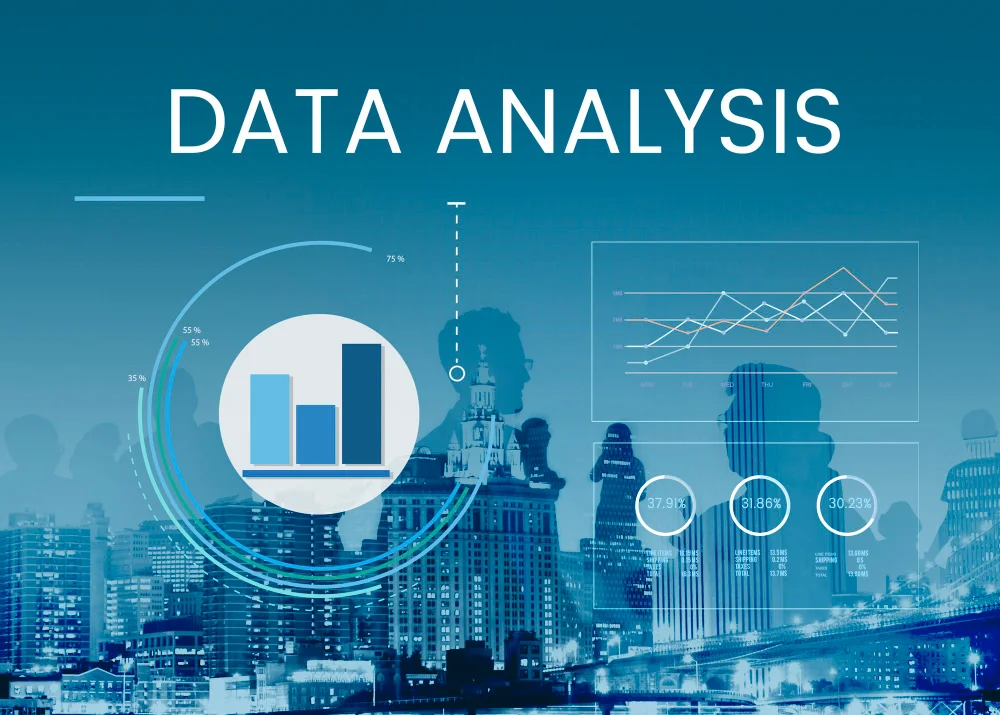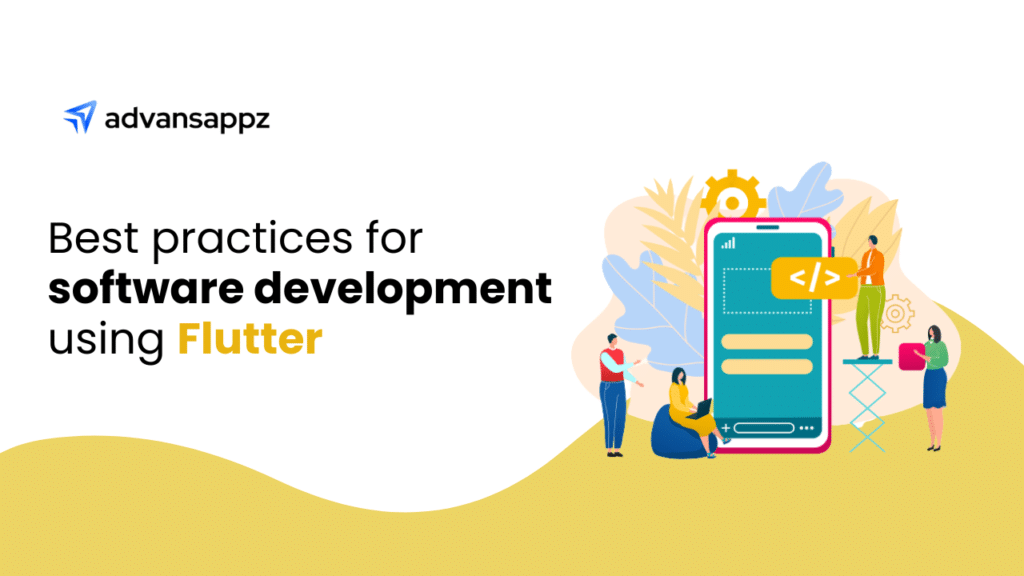Data analytics is the fuel driving modern business success. In a landscape where data flows endlessly, the ability to extract actionable insights from raw data has become a game-changer.
Data analytics transforms data into valuable knowledge, enabling businesses to:
- Fine-tune their strategies,
- Optimize operations, and
- Outsmart the competition.
For CEOs and managers, data analytics isn’t just a tool, it’s the key to making smarter decisions that propel business growth.
For instance, a survey by NewVantage Partners shows that 97% of executives are investing in big data and AI initiatives.
Furthermore, as per Forbes businesses that use data analytics extensively are 19 times more likely to stay profitable. These stats underscore why embracing data analytics is no longer optional but a strategic imperative for today’s leaders.
In this guide, we will learn everything about Data Analytics. So, let’s get started on unlocking the full potential of data analytics for your business.

What is Data Analytics?
Data analytics is the systematic process of examining, cleaning, transforming, and modeling data to uncover meaningful insights that inform decision-making.
At its core, it involves taking raw data, and applying various statistical and computational techniques to:
- Identify patterns,
- Trends, and
- Relationships that might take time to be apparent.
Furthermore, data analytics is highly versatile and applies to a wide range of business operations. For instance:
- In marketing, data analytics can optimize campaigns by identifying target audiences and refining strategies based on real-time feedback.
- In supply chain management, it enhances efficiency by predicting demand and streamlining logistics.
- Similarly, in finance, it supports risk management and fraud detection by analyzing transaction patterns.
From human resources to customer service, nearly every facet of a business can benefit from the strategic use of data analytics. Therefore, it has now become crucial for organizations to leverage data analytics.
Importance of Data Analytics

Data analytics is more than just crunching numbers. Here’s why:
- Uncovering Hidden Opportunities:
Data analytics digs deeper into your business operations, revealing hidden opportunities that aren’t obvious at first glance. For example, in marketing, analytics can help you identify which campaigns truly resonate with your audience.
Thus, allowing you to double down on what works and abandon what doesn’t. This ability to pinpoint high-impact areas drives more targeted, effective strategies that yield better ROI.
- Fine-Tuning Business Operations:
Beyond big-picture strategy, data analytics is invaluable for refining day-to-day operations. For instance, it can help you track supply chain efficiencies, spot underperforming areas, and streamline processes to save costs.
Think of it as a magnifying glass for your operations, showing you precisely where to cut the fat and where to invest resources for maximum impact.
- Empowering Quick, Confident Decisions:
Analytics shifts your data-driven decision-making from reactive to proactive. Instead of relying on outdated reports or gut feelings, you’re armed with up-to-the-minute data that helps you make swift, informed choices.
As a result, this real-time insight is crucial in fast-paced industries like retail and finance. In these industries, timing can be the difference between capitalizing on a trend or missing the boat entirely.
- Predicting Future Trends:
One of the standout benefits of data analytics is its predictive power. By analyzing patterns in historical data, you can:
- Forecast future customer behavior,
- Market shifts, or
- Even operational hurdles before they arise.
Therefore, this foresight allows businesses not just to prepare for the future but to shape it.
Key Components of Data Analytics

Data analytics is a multi-step process that transforms raw data into actionable insights. Each component plays a critical role in ensuring that the data is accurate, relevant, and presented in a way that supports decision-making. Here, we break down the key components that make up the data analytics process.
- Data Collection:
This is the first step in data analytics, where data is gathered from various sources such as databases, sensors, social media platforms, and transactional systems. Effective data collection ensures that the right data is captured accurately and efficiently, forming the foundation for all subsequent analyses. - Data Processing and Analysis:
Once collected, the data must be cleaned, transformed, and analyzed. This involves removing errors, standardizing formats, and applying statistical methods or machine learning algorithms to identify patterns and trends. Thus, this step is crucial for turning raw data into meaningful insights that can guide business strategies. - Data Visualization and Interpretation:
Finally, data visualization tools such as charts, graphs, and dashboards are used to present the findings in a clear and intuitive manner. Furthermore, effective visualization not only makes complex data more accessible but also aids in the interpretation of results. Thus, enabling faster and more informed decision-making.
Types of Data Analytics

Big data analytics can be divided into four main types, each serving a unique purpose in the decision-making process. Below, we explore each type of data analytics and how they contribute to overall business intelligence.
- Descriptive Analytics:
Descriptive analytics focuses on summarizing historical data to understand what has happened. It uses data aggregation and mining techniques to provide insights into past performance, such as:
- Sales figures,
- Website traffic, or
- Customer behavior patterns.
Moreover, this type of analytics is often used in dashboards and reports to provide a clear picture of past activities.
- Diagnostic Analytics:
Diagnostic analytics goes a step further by exploring data to determine why something happened. It involves deeper data analysis techniques, such as drill-downs, data discovery, and correlations, to identify the root causes of specific trends or issues.
For example, if sales have dropped, diagnostic analytics can help pinpoint whether it’s due to seasonal changes, marketing strategies, or shifts in customer preferences.
- Predictive Analytics:
Predictive analytics uses statistical models and machine learning algorithms to forecast future trends based on historical data. It’s particularly useful for anticipating customer behavior, predicting market trends, or identifying potential risks.
Therefore, by leveraging predictive analytics, businesses can make proactive decisions that align with future expectations.
- Prescriptive Analytics:
Prescriptive analytics recommends actions based on data insights to achieve desired outcomes. It combines data from various sources and applies advanced algorithms to suggest the best course of action.
For instance, it can optimize scheduling, inventory management, or even personalized marketing strategies. Thus, helping businesses not only predict what will happen but also determine how to respond effectively.
Challenges in Data Analytics
While data analytics offers significant advantages, it also comes with its own set of challenges that businesses must navigate. Addressing these challenges effectively can be the difference between success and missed opportunities in leveraging data for decision-making.
- Data Quality Issues:
Poor data quality is one of the most common challenges in data analytics. Inconsistent, incomplete, or inaccurate data can lead to flawed insights, which can ultimately result in misguided business decisions.
To overcome this, companies need to implement robust data governance frameworks and invest in tools that clean and validate data before analysis.
- Data Privacy Concerns:
With increasing regulations around data privacy, such as GDPR and CCPA, businesses must be vigilant about how they handle and protect personal information. Balancing the need for data insights with compliance can be tricky.
To address these concerns, companies should adopt data anonymization techniques and ensure that their data practices are transparent and aligned with legal requirements.
- Need for Skilled Professionals:
The demand for skilled data professionals often outpaces supply. Thus, making it difficult for businesses to find the right talent. Without the expertise to interpret complex data sets, the value of analytics can be significantly diminished.
To tackle this, businesses can invest in training existing employees. Furthermore, they can partner with external experts to fill the skill gap and maximize the potential of their data analytics initiatives.
How to Implement Data Analytics in Your Business

Implementing data analytics can transform your business operations and decision-making. Here’s a step-by-step guide to setting up a successful data analytics strategy:
1. Define Clear Goals:
- Identify Objectives: Start by pinpointing what you want to achieve with data analytics, whether it’s improving customer experience, optimizing supply chains, or enhancing marketing efforts.
- Set KPIs: Moreover, establish Key Performance Indicators (KPIs) that align with your goals to measure progress and success effectively.
2. Assess Data Needs:
- Evaluate Data Sources: Determine where your data will come from, including internal sources like CRM systems or external sources like market research.
- Ensure Data Quality: Additionally, implement processes to ensure the data you collect is accurate, consistent, and relevant.
3. Choose the Right Tools and Technologies:
- Select Analytics Software: Choose tools that fit your needs, whether for data visualization, statistical analysis, or predictive modeling.
- Consider Integration Capabilities: Furthermore, ensure the tools you select can integrate seamlessly with your existing systems and data sources.
4. Develop a Data Strategy:
- Create a Data Governance Plan: Establish guidelines for data management, including cybersecurity, privacy, and compliance.
- Design a Data Workflow: Moreover, outline the processes for data collection, storage, processing, and analysis to ensure efficiency and consistency.
5. Build a Skilled Team:
- Hire or Train Talent: Depending on your needs, either hire data analysts or invest in training your existing staff to handle data analytics tasks effectively.
- Foster a Data-Driven Culture: Additionally, encourage all levels of your organization to use data insights in decision-making.
6. Implement and Monitor:
- Deploy Analytics Solutions: Lastly, roll out your chosen tools and processes across the organization.
- Monitor Performance: Moreover, regularly review the effectiveness of your analytics strategy and make adjustments as needed based on performance and feedback.
Why Choosing the Right Integration Partner is Crucial:
Selecting an integration partner like advansappz can make a significant difference in your data analytics journey. Here’s why:
- Expertise and Experience: advansappz brings specialized knowledge and experience to ensure seamless integration of data analytics solutions with your existing systems.
- Customized Solutions: They offer tailored solutions to address your specific business needs, ensuring you get the most value from your data analytics investments.
- Support and Training: Partnering with advansappz provides ongoing support and training. Thus, helping your team effectively utilize analytics tools and maximize their potential.
Conclusion
In today’s data-driven world, embracing data analytics is essential for staying competitive. By leveraging data, businesses can make informed decisions, enhance operational efficiency, and drive growth.
CEOs and managers should prioritize data analytics to gain actionable insights and strategically navigate their markets.
To successfully implement data analytics and maximize its benefits, consider partnering with advansappz. Their expertise and tailored solutions will help you integrate analytics seamlessly into your business, ensuring you unlock the full potential of your data.
Contact advansappz today to transform your data into a powerful strategic asset.
FAQs
1. What types of data can be analyzed?
- Data from various sources, including customer interactions, sales transactions, social media, and operational processes, can be analyzed.
2. How often should data analytics be reviewed?
- Regular reviews are recommended, typically on a monthly or quarterly basis, to ensure timely insights and adjustments.
3. What skills are needed for data analytics?
- Key skills include statistical analysis, data visualization, and familiarity with analytics tools and software.
4. How can small businesses benefit from data analytics?
- Small businesses can use data analytics to understand customer behavior, optimize marketing efforts, and improve operational efficiency.
5. What are common pitfalls in data analytics?
- Common pitfalls include poor data quality, lack of clear objectives, and inadequate data integration.












